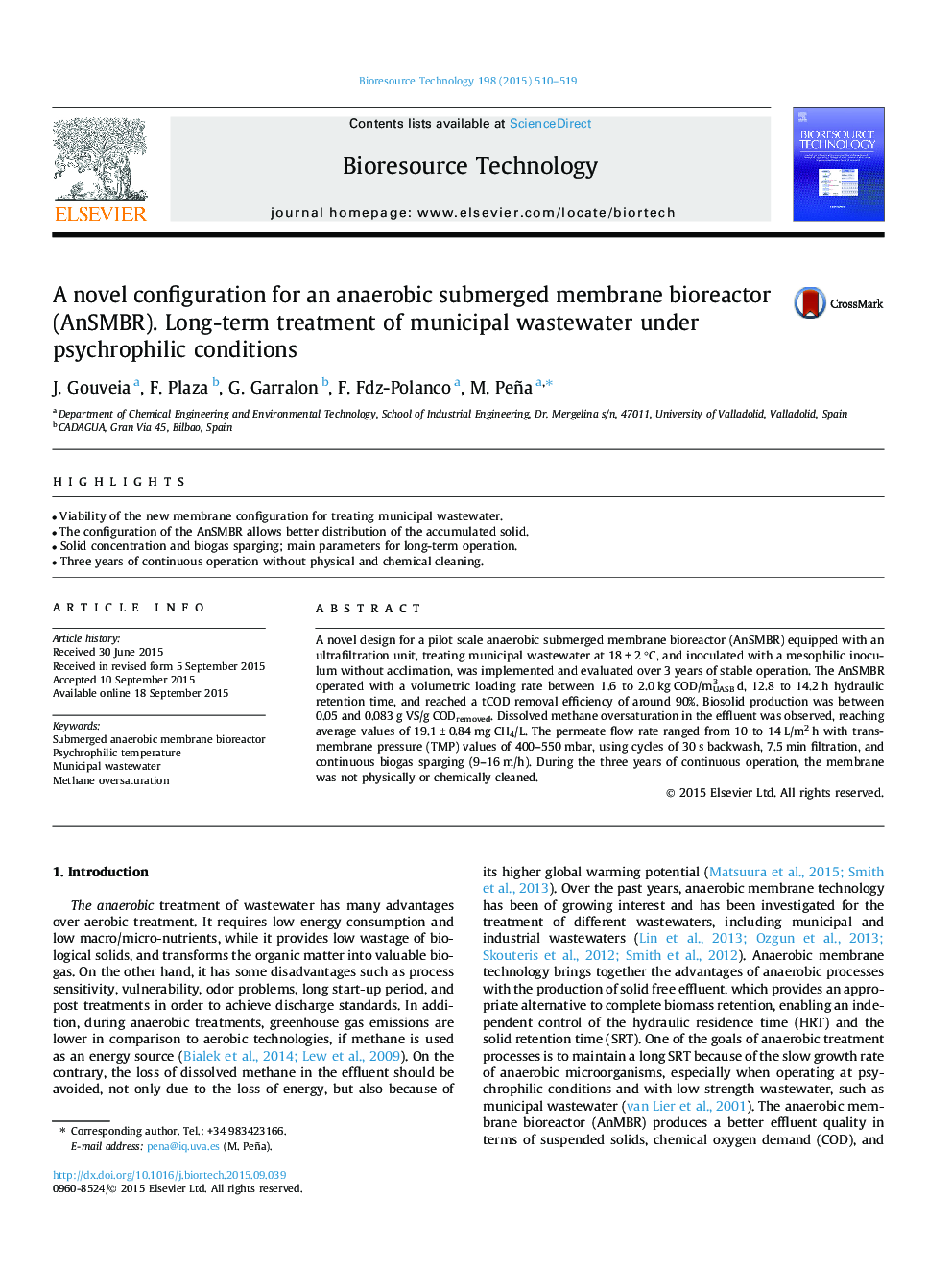| Article ID | Journal | Published Year | Pages | File Type |
|---|---|---|---|---|
| 679424 | Bioresource Technology | 2015 | 10 Pages |
•Viability of the new membrane configuration for treating municipal wastewater.•The configuration of the AnSMBR allows better distribution of the accumulated solid.•Solid concentration and biogas sparging; main parameters for long-term operation.•Three years of continuous operation without physical and chemical cleaning.
A novel design for a pilot scale anaerobic submerged membrane bioreactor (AnSMBR) equipped with an ultrafiltration unit, treating municipal wastewater at 18 ± 2 °C, and inoculated with a mesophilic inoculum without acclimation, was implemented and evaluated over 3 years of stable operation. The AnSMBR operated with a volumetric loading rate between 1.6 to 2.0 kg COD/m3UASB d, 12.8 to 14.2 h hydraulic retention time, and reached a tCOD removal efficiency of around 90%. Biosolid production was between 0.05 and 0.083 g VS/g CODremoved. Dissolved methane oversaturation in the effluent was observed, reaching average values of 19.1 ± 0.84 mg CH4/L. The permeate flow rate ranged from 10 to 14 L/m2 h with trans-membrane pressure (TMP) values of 400–550 mbar, using cycles of 30 s backwash, 7.5 min filtration, and continuous biogas sparging (9–16 m/h). During the three years of continuous operation, the membrane was not physically or chemically cleaned.
